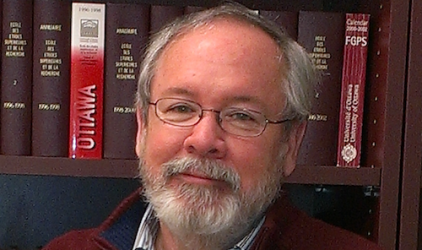Researching Antiracism, Researching History (Timothy J. Stanley)

My historical research builds on over thirty years of involvement in antiracism education. One of the challenges in antiracism is to enable people to come to terms with the reality of racisms in everyday life in the face of its absence from their historical consciousness. Racisms are racialized exclusions, and once someone or a group and their experiences are excluded, they do not enter into the knowledge of the past that commonly circulates. History, like the present, is dominated by the privileged. This results in profound silences on how racisms have shaped and continue to shape, the world we live in.
To me this presents historians with the challenge of documenting racist exclusions and their effects. My book, Contesting White Supremacy: School Segregation, Anti-racism and the Making of Chinese Canadians (UBC Press, 2011), tries to fill part of this void. This study uses Chinese language sources to document the consequences of the racialization and exclusion of people from China in Canada, and traces the development of parallel Canadian white supremacist and Chinese nationalist state formations. It documents the invention of a hybrid category of “Chinese Canadians” and the role of antiracist resistance as seen in the 1922-3 Chinese students’ strike in Victoria, BC. The Canadian Historical Association and the Canadian History of Education Association have honoured this work with, respectively, the Clio Prize for British Columbia and the Founders’ Prize for English Language Book.
 My historical research also has implications for history educators. Ultimately historical consciousness, including awareness of historical exclusions and their consequences, is key to bringing into circulation knowledge of people’s experiences of racism and hence to begin the transformation of racism. Historical consciousness and its development is central to my current research, which explores the linkages between contemporary landscapes of social memory, racist denial, and ways of making knowledge about the past.
My historical research also has implications for history educators. Ultimately historical consciousness, including awareness of historical exclusions and their consequences, is key to bringing into circulation knowledge of people’s experiences of racism and hence to begin the transformation of racism. Historical consciousness and its development is central to my current research, which explores the linkages between contemporary landscapes of social memory, racist denial, and ways of making knowledge about the past.
For example, Canadian nationalist imaginaries continually celebrate John A. Macdonald, even though Macdonald’s expressed views on people racialized as Chinese were among the most extreme of his age, even calling the Chinese a separate species from Europeans in debates in the House of Commons in 1885. He did this while debating the Electoral Franchise Act, legislation that he called “my greatest triumph.” In taking the vote from racialized Chinese, he made white supremacy a defining principle of Canadian state formation. Yet unmarked in nationalizing memory are the people who lost the vote such as Won Alexander Cumyow, who was born in what became Canada but was unable to exercise his right to vote for 88 years until the 1949 federal election.
Thus it seems to me that the antiracist project for both historians and history educators more broadly is to seek out and bring into knowledge and circulation that which has been excluded. In so doing, we can create new frameworks for representing the past that will allow all young people to explore and understand their own histories and those of their families and communities as well as their complex linkages to their neighbours and people all over the world.

